Year 4, Lesson 1.4: The Empathy Step
Semester Learning Goal
Students will investigate community needs, reflect on personal values, and apply design thinking to develop a values-aligned project idea. Through research, collaboration, and iteration, they will explore what it means to do Good Work as a good person, good worker, and good citizen.
Lesson Goal
Students will learn how to gather insight from others’ experiences, perspectives, and needs by planning and practicing empathy-based interviews. These early conversations will guide their project design in Semester 1 and help ensure they’re prepared for meaningful implementation in Semester 2.
Assessment
Monitor participation during the role card interviews and interview planning discussion.
Review students’ completed interview planning sheets and observe how well they frame questions that show empathy, open-mindedness, and purpose.
Casel Alignment
Social Awareness, Relationship Skills, Responsible Decision-Making
Portfolio Documentation
Resources
Role Cards: Sample community perspectives (e.g., student, parent, teacher, community member)
Optional: Recording devices or notepads for note-taking practice
Prerequisites
Year 4, Lesson 1.1
Year 4, Lesson 1.2
Year 4, Lesson 1.3
Total Time
45 minutes
Instructions
-
In the previous class, students began to explore topics they would like to address through their capstone project.
Students should have selected or be close to selecting a general topic or area of focus for their capstone project.
This lesson supports your growth as a good citizen by helping you understand others’ perspectives before deciding how to take action.
1. Opener: Why Empathy? (5 minutes)
Introduce the idea that meaningful community work begins with understanding others—not just acting on assumptions. Explain to students:
“This step is part of your design phase. The conversations you begin now will help shape your ideas into something meaningful. In the next part of the year, you’ll actually put those ideas into action, so listening now is one of the most important things you can do.”
Ask:
Have you ever seen someone try to help without understanding what people actually needed? What happened?
Briefly explain that in the design process, this step is called the empathy phase—where you listen deeply, ask questions, and try to understand the people affected by an issue before proposing solutions.
2. Role Card Interviews: Practicing Empathy (15 minutes)
Distribute sample role cards to students in pairs. Each role card will describe a fictional community member’s background and concerns (e.g., a cafeteria worker worried about food waste, a student who feels left out, a neighbor impacted by school traffic).
Assign one partner to play the “interviewer” and the other to role-play the community member. Give them 3–4 guiding questions to begin with (e.g., “What’s been bothering you lately?” “What would make a difference in your experience?”).
After 5–6 minutes, have partners switch roles and repeat.
Come back together and ask students:
What was challenging about being the interviewer?
What did you learn about asking good questions?
How did your perspective change when you were in someone else’s shoes?
3. Think Aloud: Modeling an Empathetic Interview (5 minutes)
Model a short “think aloud” of what it sounds like to plan or conduct an empathetic interview.
Use a sample topic (e.g., bullying, hallway congestion, student mental health) and narrate your thought process as you prepare questions.
Say things like:
“I want to ask about their experience without making assumptions.”
“I’m wondering what kinds of questions will help them feel safe opening up.”
“How can I show I’m listening and not just trying to ‘get answers’?”
4. Interview Planning (15 minutes)
Distribute the Interview Planning Handout. Have students identify 1–2 people they might want to talk to during the next few weeks as part of the design phase of their Capstone project. This could be:
Another student with lived experience of the issue
A teacher or school staff member who works closely with it
A family or community member impacted by the topic
Consider the following:
Think about how you’ll schedule your interview. Be respectful of the person’s time and availability.
Think about where the interview will take place. Is it quiet enough for a thoughtful conversation?
Will you take notes or record the interview? If so, be sure to ask permission ahead of time. Explain what the notes or recording are for and how they’ll be used.
Always thank the person at the end of your interview—consider writing a quick thank-you message or note.
Students will:
Identify their interviewee(s)
Write 4–5 open-ended questions
Note what they hope to learn
List strategies for listening with empathy
Circulate and offer feedback or suggestions as needed.
Encourage students to engage in one to two of these interviews outside of school (see optional extension). These interviews will help them build empathy, uncover needs they might not have considered, and begin shaping their ‘How Might We’ question in future lessons.
5. Closing and Exit Ticket. [5 minutes]
Ask students to complete the Lesson 1.4 Exit Ticket.
Students will work in pairs to share one question they’re most excited to ask in an interview.
Remind students that their project won’t start with action—it starts with understanding. This is the part where they gather the stories, concerns, and insights that will guide their ideas during implementation later this year.
Keep the exit ticket for the Good Work Portfolio.
Optional Enrichment - Community Interview:
Talk to someone outside of school who has experience with the issue you’re exploring. Use the Interview Protocol & Reflection handout as a guide.




